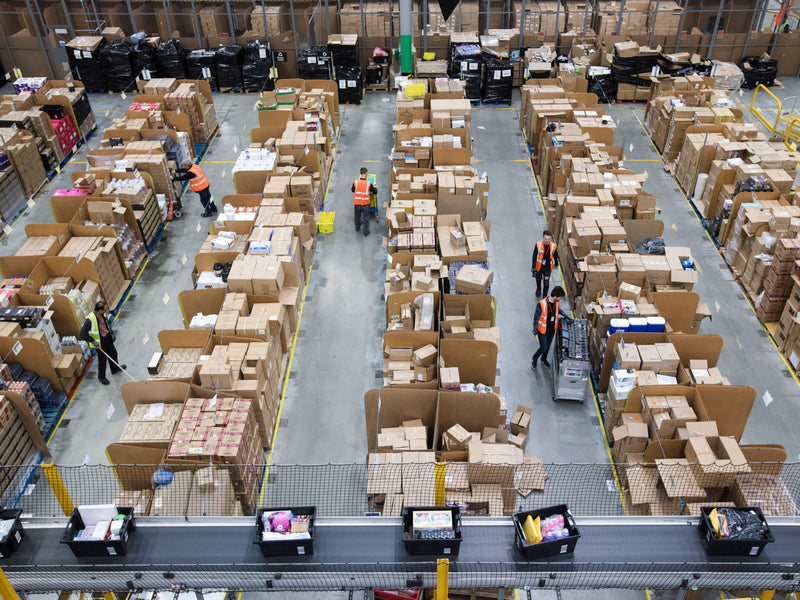The last three years have pushed fulfilment to evolve faster than at any point in recent memory. Peak-season spikes, tariff shocks, and a relentless demand for next-day delivery have forced logistics providers to rethink everything from warehouse automation to network design. Brands that once viewed their 3PL as a cost centre now see it as a critical growth enabler. In 2025 the gap between average and best-in-class is only widening.
At eComplete we benchmark dozens of warehouses every quarter while operating our own DTC brands through multiple fulfilment partners. We see the tech roll-outs, contractual shifts, and service upgrades that separate tomorrow’s leaders from providers stuck in 2015. If you are reviewing your logistics stack this year, here is what “leading” will look like and where you should set the bar.
Automation, Data, and Decision Science at the Core
Robotics, machine vision, predictive labour scheduling, and AI-driven routing are no longer pilot projects. They are becoming standard operating practice. The 2025 State of the Third-Party Logistics Industry report notes that providers investing in automation and connected WMS platforms out-perform peers on order accuracy and labour costs by up to 30 percent extensiv.com.
Consumer expectations reinforce that trajectory. McKinsey’s latest e-commerce outlook states that speed, reliability, and friction-free returns are now baseline requirements for online shoppers rather than premium add-ons McKinsey & Company. To meet those standards, leading 3PLs are:
-
Deploying goods-to-person robotics for high-SKU facilities
-
Using machine-learning labour models that flex headcount to real-time order volume
-
Integrating OMS, WMS, and carrier APIs so that tracking, stock, and cost data live in one dashboard
-
Running AI-powered slotting to reduce pick paths and shorten same-day cut-offs
Operator view: if your warehouse cannot provide real-time stock, order, and SLA data through an open API, it will fall behind competitors that can.
Sustainability and Compliance Baked Into the Workflow
Regulators and consumers both demand greener operations. From April 2025 large and small producers shipping to UK customers must report packaging volumes under the Extended Producer Responsibility rules or face financial penalties GOV.UK. Forward-thinking 3PLs are:
-
Offering on-site packaging data capture to feed client EPR reports
-
Introducing recycled and right-size packaging lines to cut void fill and DIM charges
-
Running carbon-footprint dashboards that allocate emissions per order, not just per truck
-
Sourcing electric or low-emission final-mile partners for urban zones
Gartner’s Future of Supply Chain outlook highlights that compliance and sustainability KPIs will account for up to 30 percent of enterprise RFP scoring by 2026 Gartner. Your fulfilment partner needs a roadmap, not a vague ambition, to keep you ahead of legislation and customer scrutiny.
Resilient Networks Built on Nearshoring and Flexible Inventory
Seventy-six percent of shippers and seventy-one percent of 3PLs plan to move a share of inventory closer to end customers in 2025, according to NTT Data’s Third-Party Logistics Study us.nttdata.com. Trade volatility and tariffs are pushing the trend even further. Fashion brands reacting to US duty hikes have opened domestic distribution centres or bonded facilities to postpone tariff payments and speed delivery times Vogue Business.
Leading 3PLs now offer:
-
Multi-node footprints spanning the UK mainland, EU, and either US East or West Coast
-
Bonded or duty-deferred sites that allow stock to clear customs only when orders are placed
-
Dynamic inventory balancing that shifts stock between nodes based on real-time demand
-
Contract structures that let brands scale volume bands up or down without punitive penalties
Operator view: resilience is not just disaster recovery. It is the ability to pivot stock, carriers, and even fulfilment nodes within days rather than months when markets or tariffs shift.
Conclusion: Setting the 2025 Standard
By the end of 2025 a leading 3PL will look more like a supply-chain tech company than a traditional warehouse. Automation drives labour efficiency, data transparency keeps finance teams informed, sustainability features are embedded by design, and network flexibility protects margin in volatile markets. If your current provider cannot demonstrate measurable progress in these areas, it may already be slipping behind the curve.
eComplete works with brands to audit performance, benchmark costs, and transition to partners that meet tomorrow’s standards today. Our operator-led model means every recommendation is tested in real-world trading conditions before it reaches your shortlist.
For free advice and an audit of your current set up get in touch



